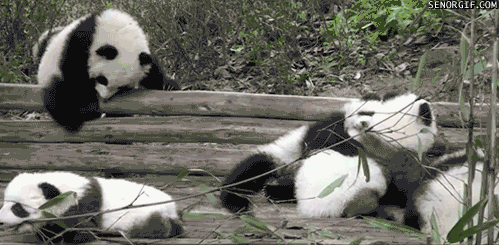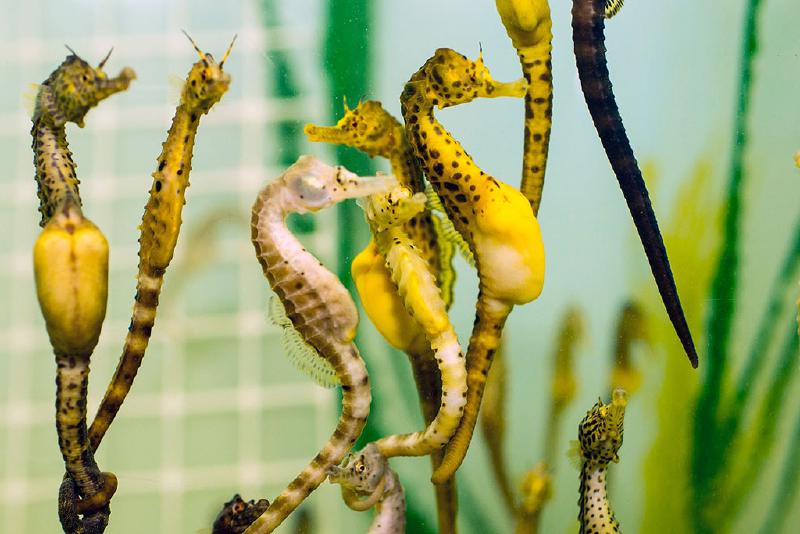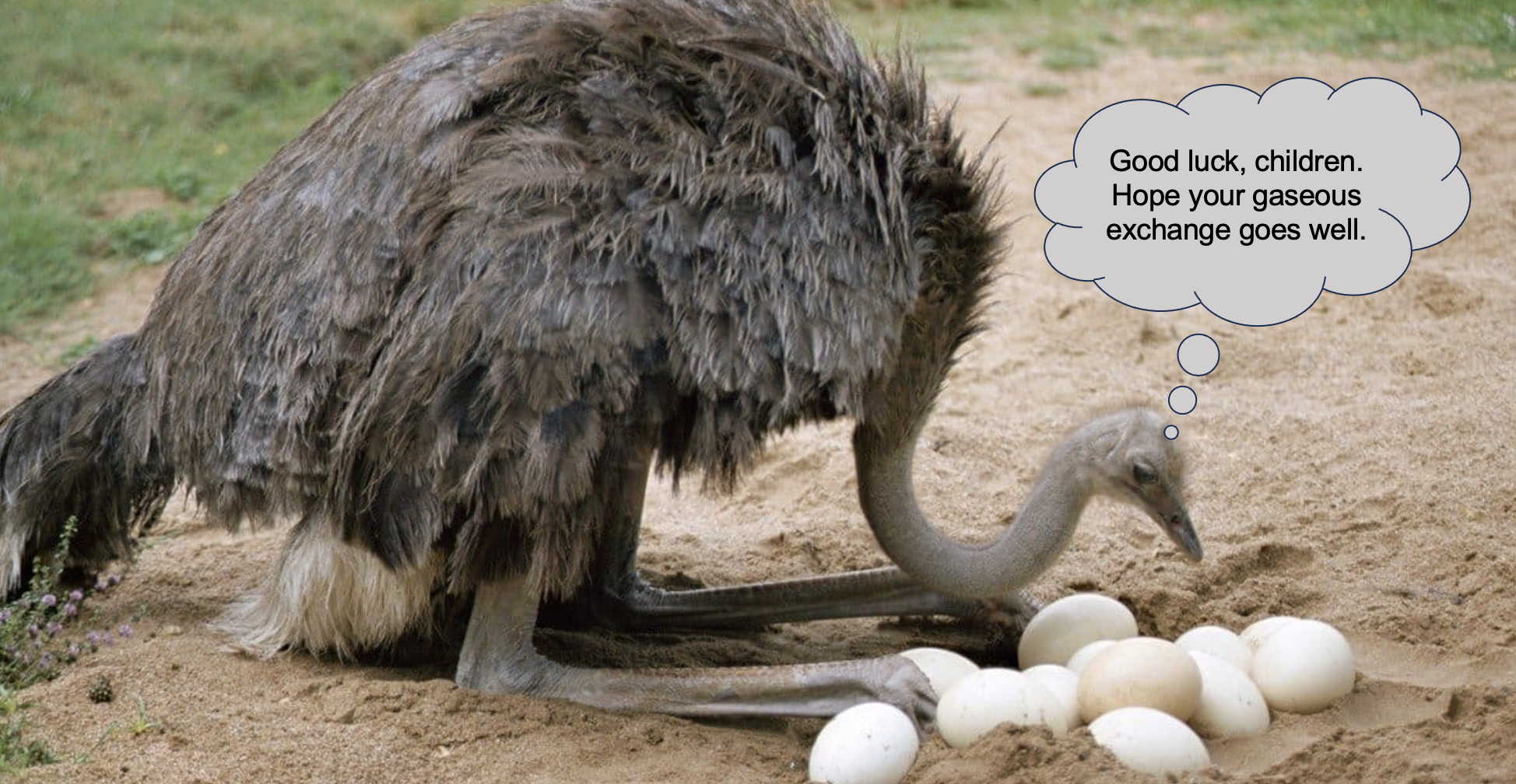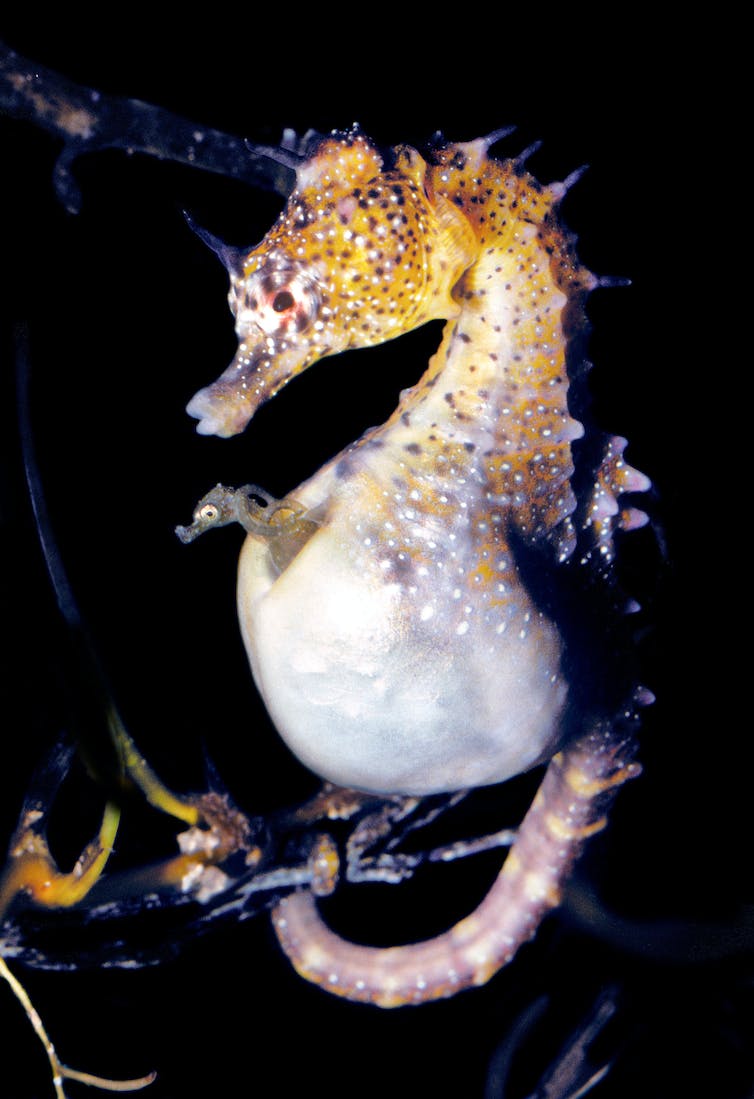Hello and welcome to another Fun Fact From Flora , Today, we look at a particularly exceptional creature, the pot-bellied (or big belly) seahorse.
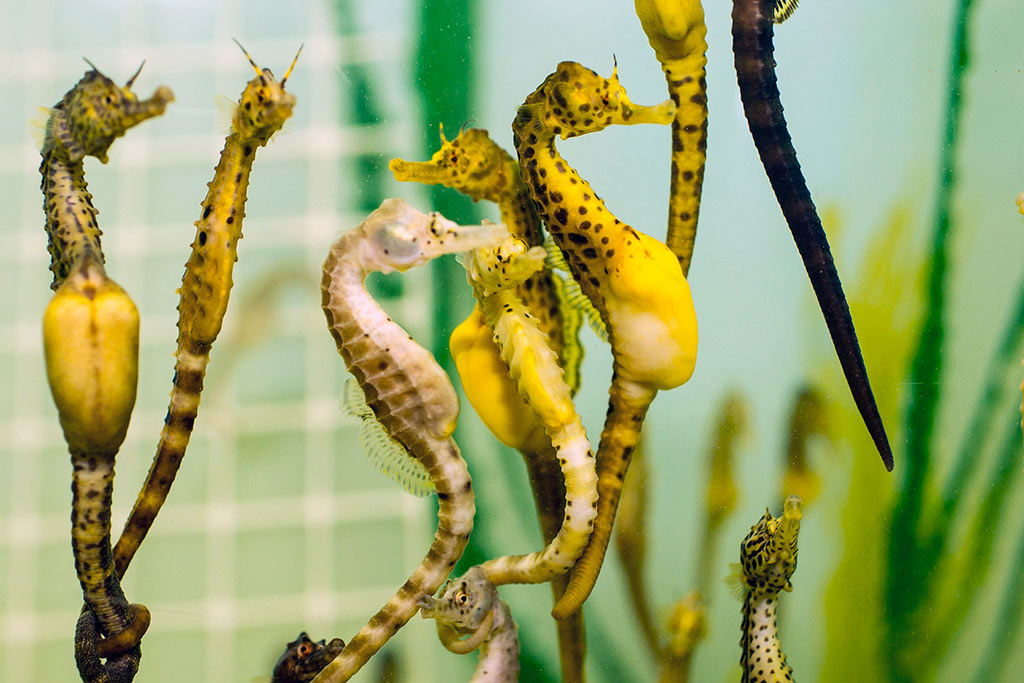
This little guy is actually one of the largest seahorse species in the world , getting up to 35cm long. They live in shallow waters and really love a good seagrass meadow.
Now, without a doubt, the coolest biological feature of the seahorse is that it is the male that gets pregnant. That really never fails to blow my mind.

Some people find that a difficult concept. Surely, if one animal is getting pregnant , that means it must be a female? Not so! We declare things male or female based on the size of the sex cells (or gametes) that they produce. If it makes sperm (the smaller gamete), it’s a male, no matter what happens next. If it makes eggs (the bigger gamete) it’s a female.
But before that happens, there is still a lot of woo-ing to be done , including a very lengthy courtship dance. The male starts off by inflating his pouch to (and I quote) balloon-like proportions . Poor man.
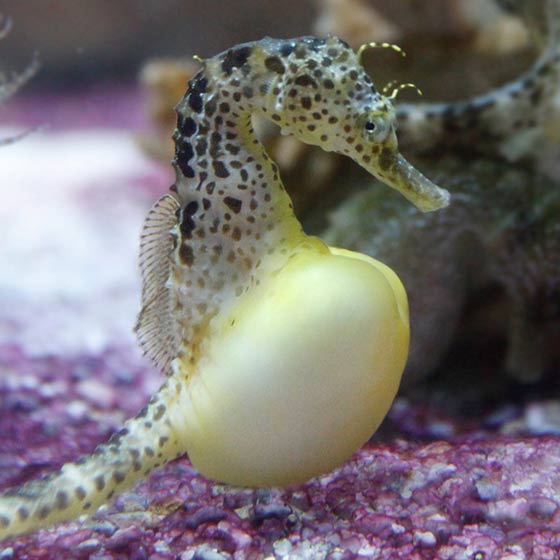
Mmmm so sexy.
He then uses
c
o
l
o
u
r
c h a n g e
He approaches the female he likes the look of again and again, with his head tucked and his fins fluttering (okay that sounds more like some men I know).
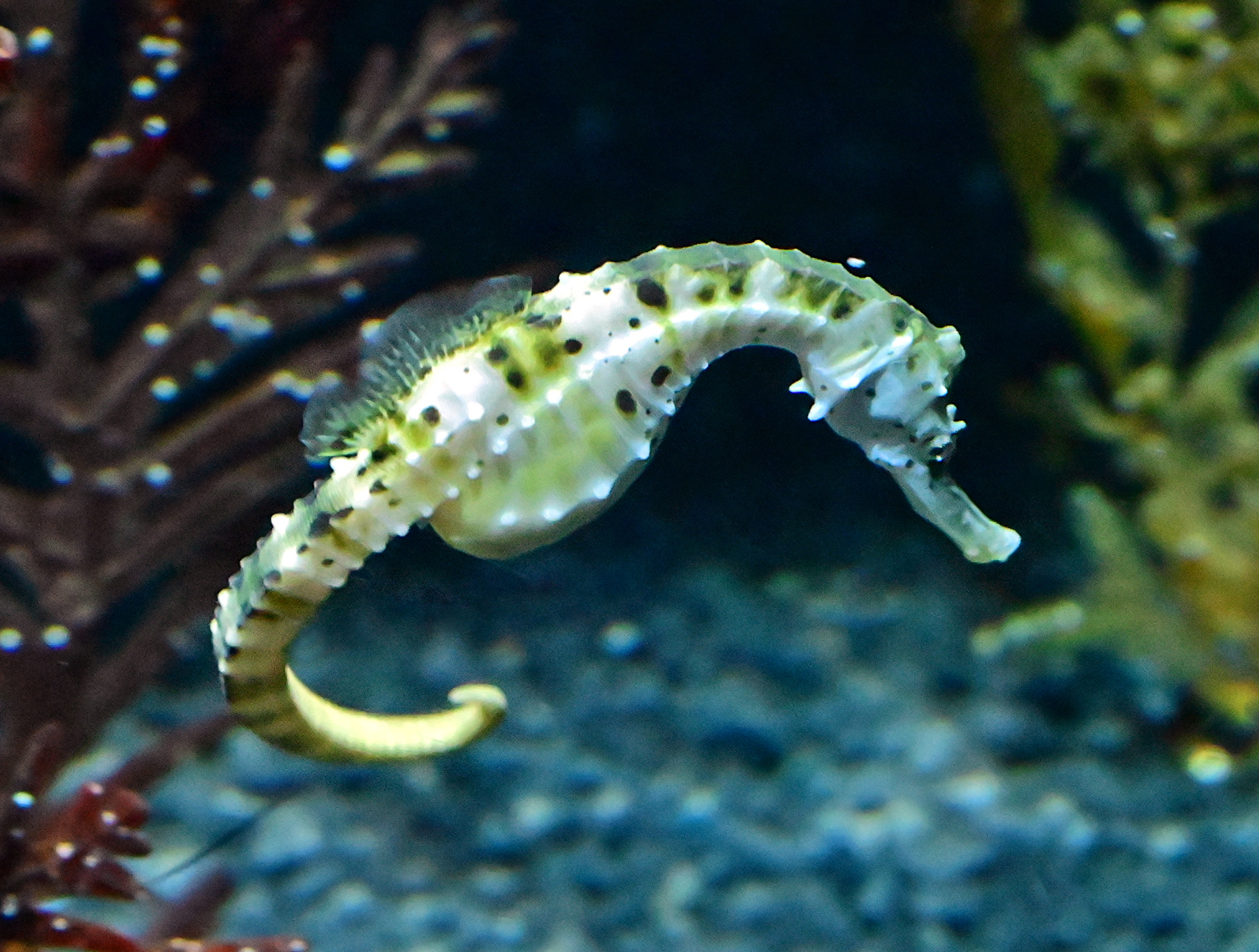
If the female likes him back she reciprocates with some of her own head tucking and fin fluttering and colour changing. Once it has been established that all parties are pretty keen, they start swimming together , sometimes entwining their tails together, in a dance .

They then dash to the surface and the female deposits her eggs into man’s dilated pouch. He will release his sperm within the pouch to fertilise the eggs and he will continue to look after their kiddiwinkles for only about 30 days until they are ready to go. He can have up to 1,000 of them in there!!
Now, there is a problem that occurs in any pregnancy. How do you get nutrients and oxygento your rapidly developing offspring and make sure that you get rid of all of the pesky carbon and nitrogen waste products that they produce? If you are an egg-layer it is easy, the shells are porous so all of the gases can come and go without your input.
Well, for us humans, we have a very handy thing — the placenta. So, how do seahorses do it if it is the males that are doing the pregnant-ing.
They actually develop some complex placental structures over time, in a way that is actually very similar to human pregnancy.
They develop lots of small blood vessels in the pouch, like those that we see in human placentas, and so the distance between the father’s bloody supply and the embryos decreases dramatically as the pregnancy goes on. This is important, because as the little fishies get older they need more and more oxygen.
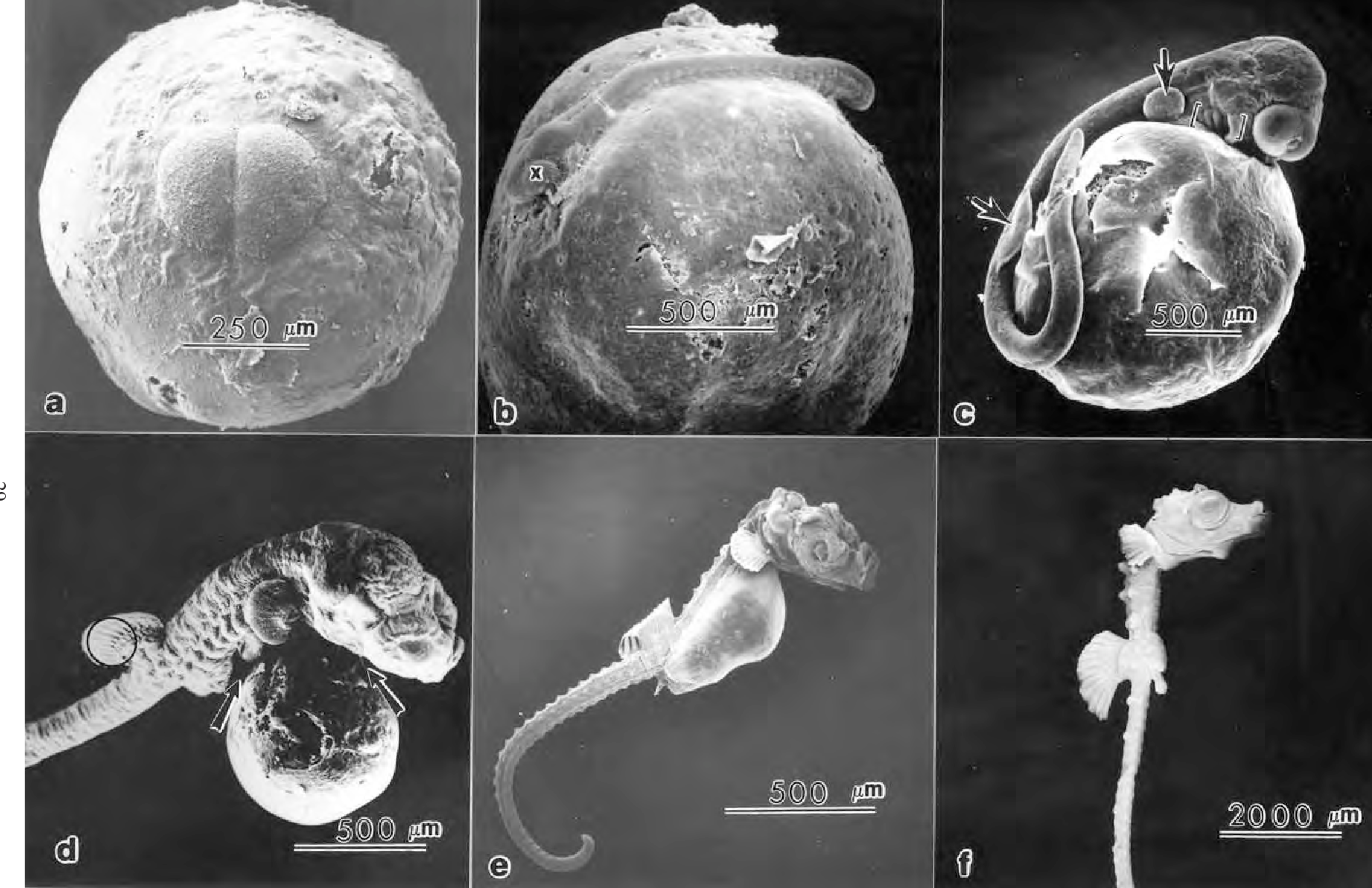
The dads will also supply very energy-rich fats and calciumto help the embryos to build their tiny skeletons and even produce antibacterial and antifungal molecules to keep them safe from infection.
And then, birth. What happens there??
Well, with a week or so to go, the seahorse dads start producing hatching signals , which cause the little tiny baby seahorses to break out of their thin membranes and start to swim around freely inside the brood pouch. Oestrogen also plays a role in producing a cascade of signals that help to induce birth.
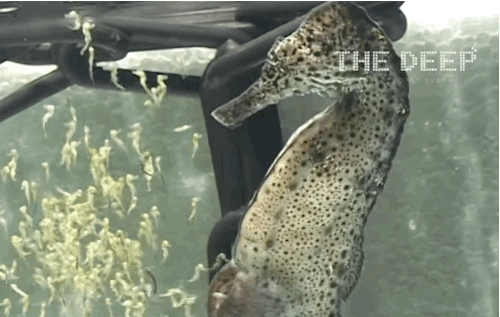
And amazingly, the genes involved in pregnancy are remarkably similar in both mammals, seahorses and other fish that also have pregnancies (the females though!) even though they all evolved separately. It seems to be a really remarkable case of convergent evolution — where the same final state evolves more than once from different starting points.
Now, the mums are not totally absent from the process, the eggs that get passed over to the dad do contain a good number of nutrients in the egg yolk that feeds the developing embryo.
But it definitely does remain a bit of a mystery as to just why the females have handed the pregnancy role to males.
If I find out, I"ll let you know.
Hope you enjoyed another fun fact.
Lots of love,
Flora
